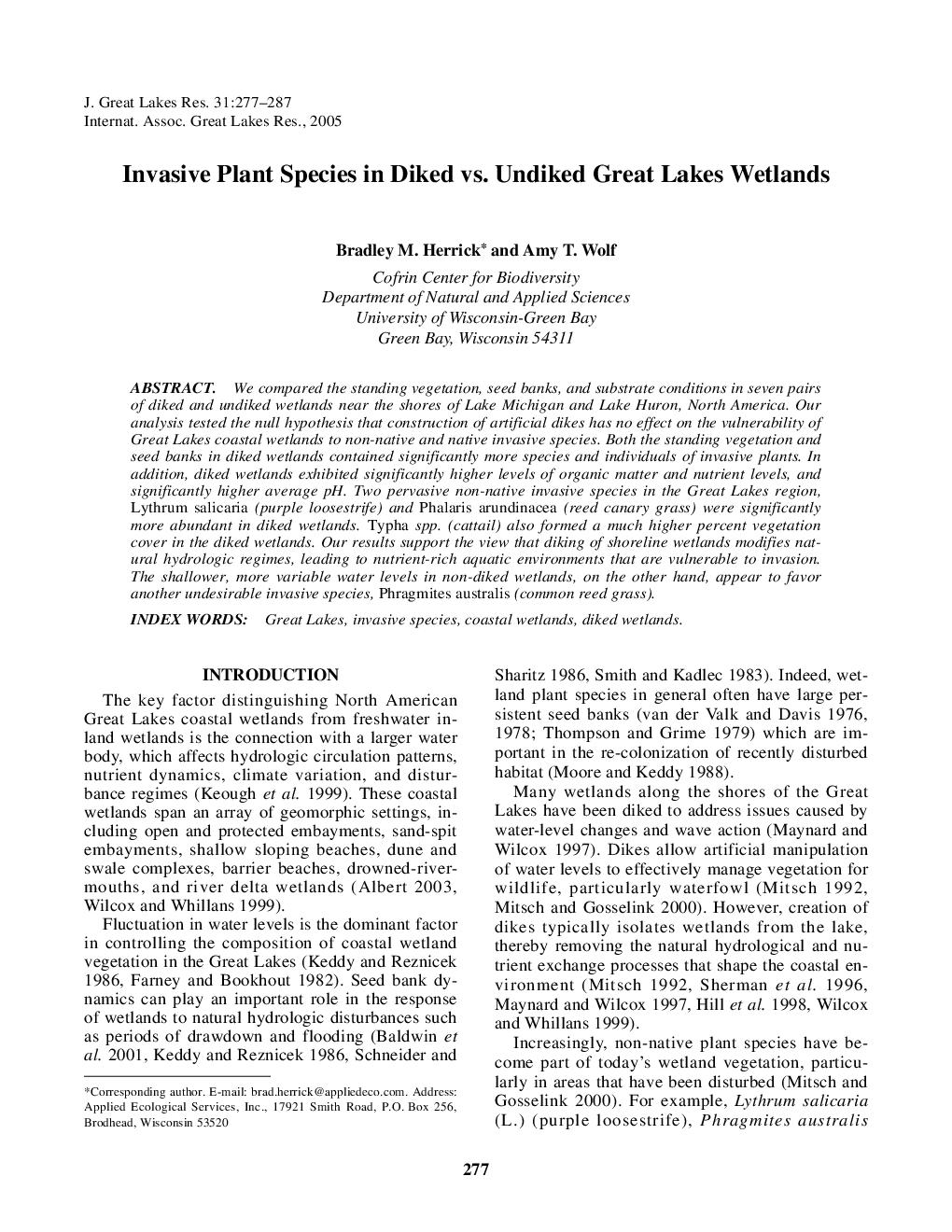| Article ID | Journal | Published Year | Pages | File Type |
|---|---|---|---|---|
| 9450403 | Journal of Great Lakes Research | 2005 | 11 Pages |
Abstract
We compared the standing vegetation, seed banks, and substrate conditions in seven pairs of diked and undiked wetlands near the shores of Lake Michigan and Lake Huron, North America. Our analysis tested the null hypothesis that construction of artificial dikes has no effect on the vulnerability of Great Lakes coastal wetlands to non-native and native invasive species. Both the standing vegetation and seed banks in diked wetlands contained significantly more species and individuals of invasive plants. In addition, diked wetlands exhibited significantly higher levels of organic matter and nutrient levels, and significantly higher average pH. Two pervasive non-native invasive species in the Great Lakes region, Lythrum salicaria (purple loosestrife) and Phalaris arundinacea (reed canary grass) were significantly more abundant in diked wetlands. Typha spp. (cattail) also formed a much higher percent vegetation cover in the diked wetlands. Our results support the view that diking of shoreline wetlands modifies natural hydrologic regimes, leading to nutrient-rich aquatic environments that are vulnerable to invasion. The shallower, more variable water levels in non-diked wetlands, on the other hand, appear to favor another undesirable invasive species, Phragmites australis (common reed grass).
Related Topics
Physical Sciences and Engineering
Earth and Planetary Sciences
Earth and Planetary Sciences (General)
Authors
Bradley M. Herrick, Amy T. Wolf,
